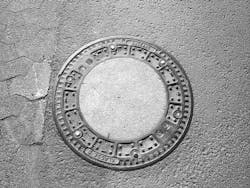New Option to Treat Textile Wastewater
Microbial fuel cells (MFCs) are emerging as an option to treat textile wastewater.
According to The Hindu, a startup called the SP Enviro, aims to use this technology to process textile wastewater and generate electricity that will render this exercise energy-efficient.
“Though we have developed the technology for processing wastewater from the textile industry, it can be used with any other industrial wastewater,” said Dr. Priyadharshini Mani at the Biotechnology Department of IIT Madras.
The team is working on the restoration of a lake attached to the Integral Coach factory at Villivakkam in Chennai. In the process, a carefully selected cohort of bacteria is made to act on the textile wastewater placed in the fuel cell. These bacteria are isolated from the wastewater they are meant to degrade.
According to The Hindu, they feed on the organic material in the water and break it down under anaerobic conditions, releasing electrons in the process. The electrons are collected at the anode which results in a current in the circuit, because the bacteria form a biofilm on the anode, the electrons are collected easily by it.
“After a period, when the thickness of the biofilm exceeds a limit, it will automatically detach and bring back the thickness to optimal level,” Dr Kumar said.
The team is working on a nanotech filter to improve this process, according to The Hindu.
“This is like a ‘trickling filter’ – where after thickness exceeds a limit, and it is difficult to sustain that thickness, the excess tears off,” Kumar said. “When it falls off, it shouldn’t get mixed up with the water. That’s where the nanotechnology filter will come in, to remove the bacteria and get clean water.”
The bacteria then take turns to act on the wastewater and purify it. If a dye is present in the water, it is broken to a simpler form by one species. According to The Hindu, this is acted on by another species and so on.
“It has a cascading effect,” Kumar said.
With the prototype, they can generate power of around 1 watt per sq meter, they aim to get to about 5 watts per sq meter. This power can be used to sustain the process.
